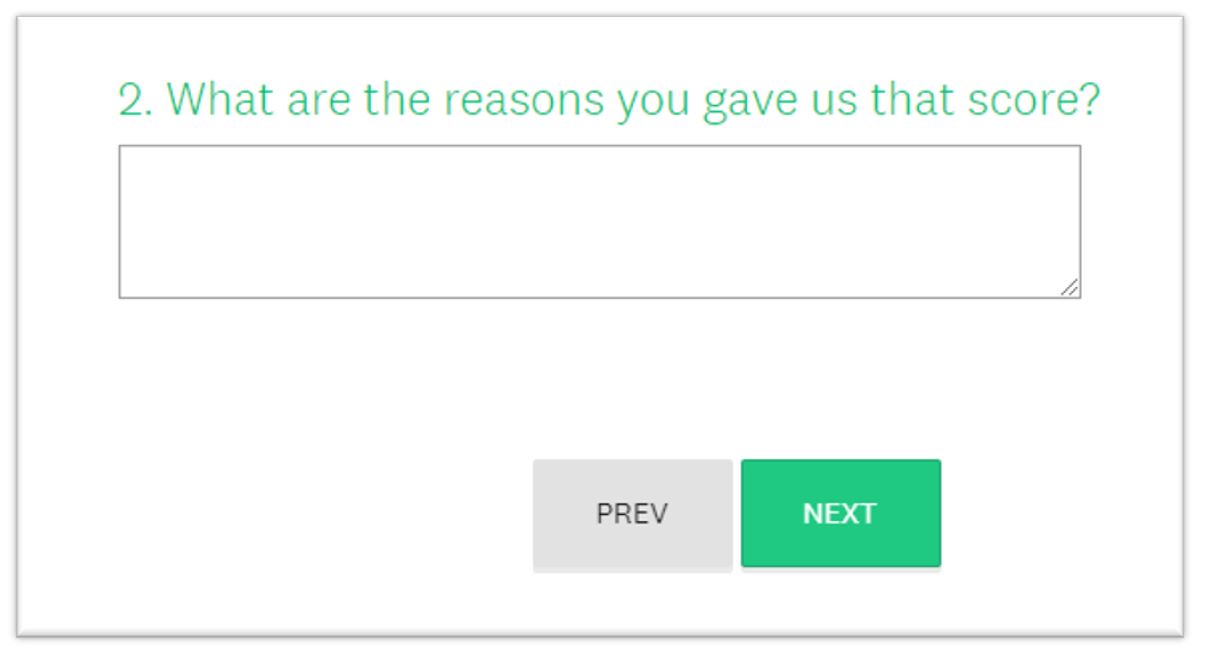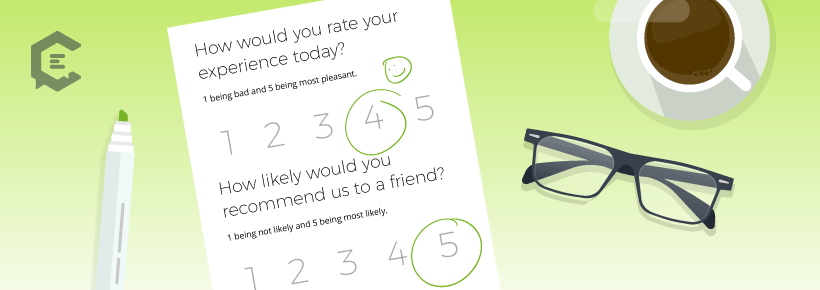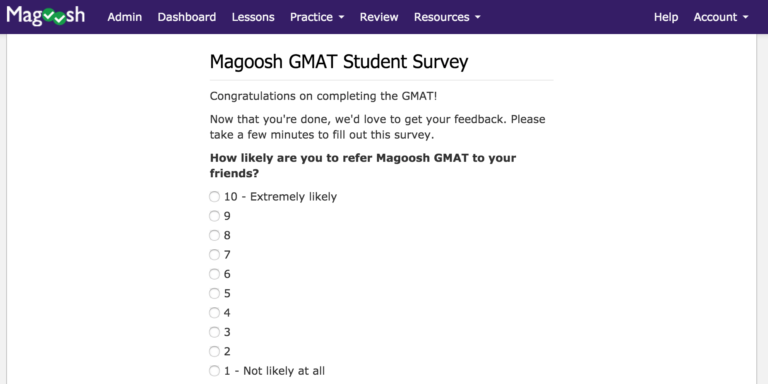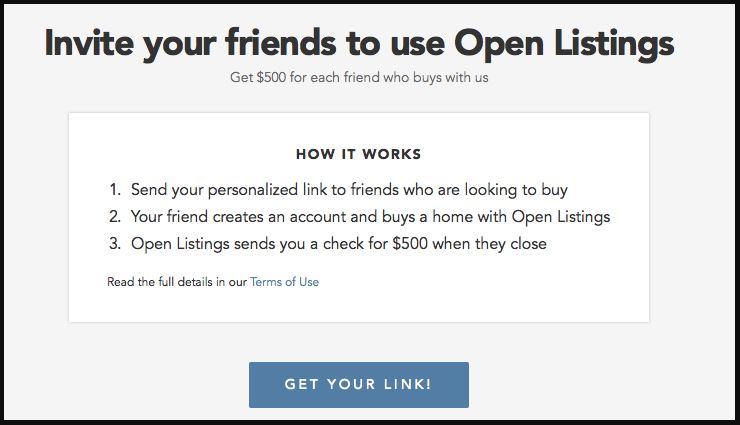The Net Promoter Score (NPS) is a measurement standard created by Bain & Company, Inc., which has been widely adopted across industries as a way to measure the willingness of a customer to recommend a product or service to their friends. Set as an index, from -100 to 100, anything in a positive range indicates a positive impression of the product or service, and anything below zero indicates a negative impression.
Recently, when leaving a restroom in the Detroit airport, we noticed a customer satisfaction survey touchscreen mounted in the wall — screaming out at me that using data to improve the customer experience is as hot a topic as it ever has been! Airlines are working to improve the traveler’s experience and are collecting customer feedback in numerous steps along the traveler’s customer journey… And as consumers, we gain the benefit of cleaner airport restrooms.
While the customer feedback solicitation screen in the airport restroom was only asking for a three-level response (exceptional, average, poor), a more common approach in the world of marketing is to use a 10-level response scale, asking how likely the customer is to refer a friend. This type of scale, coupled with a simple calculation of responses, is known as the Net Promoter Score (NPS).
Because readers of the ClearVoice blog are generally more sophisticated in their marketing and business knowledge, we imagine many of you already have heard of NPS, and some of you have likely used it in your own marketing efforts. As such, we’re only going to briefly touch on what Net Promoter Score is, and how to calculate it. The majority of this article will be focused on how to increase the accuracy of your Net Promoter Score, and how to put it to work for your content marketing team.
What is a Net Promoter Score?
The Net Promoter Score (NPS) is a measurement standard created by Bain & Company, Inc., which has been widely adopted across industries as a way to measure the willingness of a customer to recommend a product or service to their friends.
Set as an index, from -100 to 100, anything in a positive range indicates a positive impression of the product or service, and anything below zero indicates a negative impression.
How is a Net Promoter Score calculated?
The score component of NPS is calculated from a single response provided by the customer. When the customer is asked “On a scale from 0 to 10, how likely are you to recommend Product X to a friend or colleague?” they then click on a number, from a 0 to 10 range. If they respond with a 0 to 6, they are considered a Detractor, or someone that is unhappy with your product. If they respond with a 7 or 8, they are considered a Passive, or someone that doesn’t have a strong opinion one way or the other of your product. If they respond with a 9 to 10, they are a Promoter, someone who is more likely to promote your product to others.
To calculate the Net Promoter Score you simply subtract the percentage of Detractors from the percentage of Promoters. Here is an example calculation of NPS:
- You survey your customers and find that 30% are Detractors and 50% are Promoters (leaving 20% as Passives)
- You ignore the Passives and use just the Detractors and Promoters in your calculation
- Promoters – Detractors = 50% – 30% = 20%
- Thus, 20 is your Net Promoter Score
From the U.S. Consumer Net Promoter 2018 Benchmark report, we see that the average NPS differs wildly from industry to industry, ranging from -1 for business in the internet service provider industry to 62 for those businesses in the retail department store space.
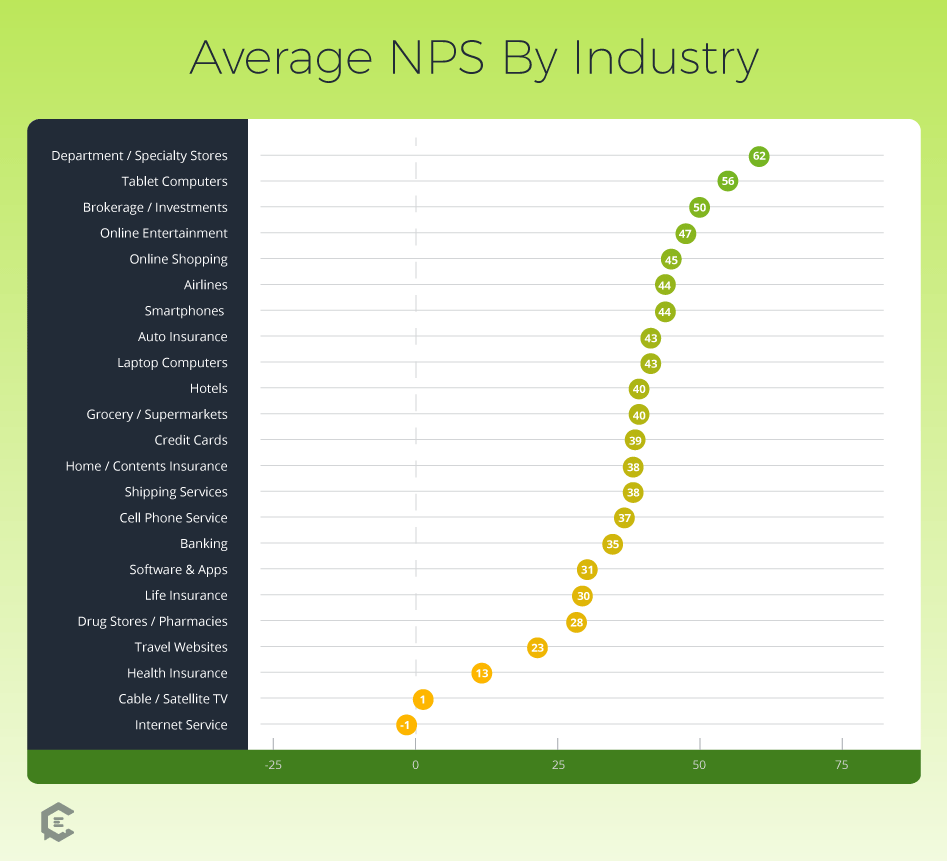
How to Increase the Accuracy of Your Net Promoter Score
Understanding your net promoter score is imperative, but you also need to know how to improve your Net Promoter Score mechanism so that it’s capturing your real score. Most web articles that discuss NPS explain ways that you can increase your score, but in reality the only things that should be increasing your score are actual improvements to your business processes or products.
The goal should not be to increase your Net Promoter Score artificially, but instead to increase score’s accuracy. Ensuring your NPS surveys go to the right people, at the right time, in the right way, will increase the accuracy of your NPS measures.
You’ve probably heard it before, or maybe even seen it in your own habits, but customers most often only leave feedback if they have something negative to share.
Thus, it is more important for the long term success of your business to find ways to improve the accuracy of your NPS, trying to get a good distribution of all your customers (not just the unhappy ones) to leave you feedback in your Net Promoter Score collection process.
Below are Four Ways You can Better Collect NPS Feedback:
1. Build better NPS measurement mechanisms
Most marketers have the wrong idea that the NPS collection process should be overly simple and quick. We’ve even seen NPS surveys that simply ask how likely someone is to recommend a friend or colleague, and then after that is submitted it says, “Thanks!”
While brevity and simplicity are two things marketers should strive for in all situations, they also need to think about the customer experience. If your customer has taken the time to click through an email to leave an NPS score for your business, they are committing some of their time to you.
What if they actually have something to share, beyond a simple 1 to 10 rating? You should give them a chance to give more feedback, while still keeping it succinct. We recommend giving them two more questions, including:
- What are the reasons you gave us that score?
- Is there something specific we can do to improve your experience?
2. Survey the right people
Many marketing teams find themselves sending out Net Promoter Score surveys to anyone in their customer database. The thought is, “If they are a customer, we should request their feedback, right?” Maybe. Be thoughtful about who you are requesting feedback from.
Generally, though, you should strive to make sure the actual users of your product or service are being surveyed. You may not want to include individuals in a business or household with one of your customers, which is not directly using the product or service.
3. Improve the timing of your Net Promoter Score collection process
While it is important that you test the timing of your NPS survey requests, many marketing firms see good results by having the first survey go out shortly after main consumption. Depending on your business type, that could mean right after someone has first received a product of yours and tried it out. Or if it is a B2B software tool, you should wait until someone has had X hours of interaction with your product.
Then, if your product or service is a “durable” one, meaning that it isn’t consumed in one sitting, you should find other timings for followup NPS requests. These most often occur on a quarterly or bi-annual recurring basis.
4. Utilize the right channels for NPS survey outreach
Getting the right survey content, to the right people, at the right time is crucial for increasing the accuracy of your Net Promoter Score. The last piece to that improvement mix, though, is to make sure you’re getting the NPS survey in front of your customer through a channel that best suits them.
If you communicate through email, use email as the request mechanism. If you have a software product, solicit feedback from inside the application. If your audience is an older one that isn’t as internet savvy, maybe picking up the phone and giving them a call is the best method to connect.
How to Put the Net Promoter Score to Work for Your Marketing Team:
Sadly, the role of capturing and analyzing Net Promoter Score is often split between the marketing team (responsible for capturing NPS) and the product teams (responsible for analyzing NPS). This often leads to breakdown where the collection process may not match the needs of the analysis. For that reason, we encourage marketers to ensure their voices are heard in the NPS analysis process.
As marketers often control the front line customer interactions, it may make sense for them to be directly responsible for the goal of increasing your NPS.
1. Leverage NPS to improve the customer experience
Before one of our employees went to grad school, they needed to take the GMAT (a standardized test for graduate school) to prove worthy. To help boost their score, they knew they’d need to study, and so they turned to Magoosh, a quizzing and teaching software tool that helps improve scores for standardized test-takers.
Even though it has been a while since using their software, one thing we vividly remember about their software was that they had in application solicitations for NPS feedback. As we were researching for this article, we came across a blog post from Magoosh where they discuss how they’ve used the Net Promoter Score to improve their product. While we encourage you to read their article, we’ll summarize here as well.
As Magoosh was collecting NPS feedback they saw a sudden downturn in their score.
Because the good people at Magoosh were watching NPS feedback closely, they were well poised to see shifts in the score and use that as a catalyst to determine why a shift had happened — and then fix the problem.
After close analysis, they saw that they were receiving more passive and detractor feedback due to students complaining they did worse on the actual GMAT then they were doing on practice tests within the app.
To improve the customer experience, they needed to fix their practice test scoring mechanisms so that the practice scores better aligned with the real scores. After making the fix, they saw NPS normalize back to where it had been.
2. Forecast customer churn with Net Promoter Score feedback
Loyal customers and brand advocates (your Promoters) are those that you can count on to be in for the long haul. You’ve worked hard on creating lasting relationships with them, and it shows in both the higher Net Promoter Scores they leave for you as well as in the revenue they continue to bring in.
Likewise, poor NPS values indicate your customer is more likely to no longer remain a customer. While each firm has differing business models and customer churn calculations, make sure your NPS is part of that calculation, as it can be a strong way to forecast customer churn.
3. Increase customer lifetime value
While many businesses tend to focus on “he who shouts the loudest,” it is important to recognize that you may have a love group who represents your best customers and gaining more of those types of customers will better improve your customer lifetime value (CLV) than focusing on the squeaky wheels.
Most of the advice around NPS improvements discusses focusing on your detractors and turning them into passives or promoters. But perhaps you should instead use your NPS finding to identify who your best customers are — those people who continue to love your brand — and find more of them. Doing so is one of the best ways to increase your customer lifetime value.
A particularly easy and helpful way to focus on gaining more promoters is to tag the promoter customers in your customer relationship management software and then run reports on them, as a segment, to see if their CLV is higher than average for your firm. If so, you’ve now got a great argument for realigning your marketing strategies to pursue them as future customers.
4. Use NPS to reduce customer acquisition costs
Your promoters, those leaving 9 or 10 scores in the NPS feedback, are more likely to promote your business through word-of-mouth than the passive or detractor level customers. As such, find ways to ask these promoters for word of mouth referrals. You can take several approaches to do so, including:
- Start a customer advocacy board (CAB) with your most influential promoters. One of my clients reached out to the top 20 promoters and solicited active participation on their CAB, in return for lots of cool perks. This client firm even flew the CAB members out to Utah for skiing each year, and in turn held meetings during the time to solicit product feedback that greatly improved the likelihood that they’d be able to capture new customers similar to the promoters on their CAB. While the short term costs for operating the CAB were considerably higher than the short term gains (revenue), in the long run this CAB provided such great product development feedback, not to mention additional business referrals, that it more than paid for the ongoing operation. In fact, this client business went on to acquire their largest competitor and the client attributes much of their success to this Customer Advisory Board.
- Start a VIP referral program. Similar to an affiliate program, where purchases are tracked through links specific to a given promoter, a VIP referral program should offer perks and rewards of a non-monetary nature: company swag, free travel and passes to conferences, etc. By gamifying the process of referring added business, and only offering membership in the game to your promoters, you’re likely to turn them into even greater promoters as well as gain a lot of referrals.
- Providing an online community for promoters to share product best practices with each other can get your customer advocates talking, and as they become more active with your brand and with each other they’ll be more responsive to solicitations for referrals.
5. NPS powered customer segmentation
Segmenting your customers based on the Net Promoter Score is a great way to recognize patterns between those customers, to identify the best things about your promoters and try to find more of them, as well as to identify problems that your detractor customers continue to face. Once you’ve identified the recurring problems, you then need to ask yourself if those problems are things you want/need to/should fix, and if not (as often is the case) how you’ll change your advertising targeting to go after the customer segment that is most likely to not care about that deficiency.
If you can use your NPS to improve your customer segmentation and realign your targeted efforts, you’ll see an increase in the number of promoters simply due to the fact that the new customers you are onboarding fit the same persona as your previous promoters. As you can see, NPS helps improve customer segmentation as well as the creation of better customer personas.
6. Gather user-generated content from your promoters
At the risk of sounding repetitive, one other suggestion I have for putting NPS to work for your marketing group is to find advocates who are willing to help with content marketing. Good content marketing takes time and money, and depending on how in-tune the content marketing manager is with their customer, faces the risk of producing content that may miss the mark.
Identifying your customer advocates through Net Promoter Score surveys, and then asking those individuals to provide you with user-generated content is a great way of getting more affordable, better, and more on target content.
You can work with these promoters to gather advocate testimonials, quotes, case studies, videos, and even event partners. For example, one of my clients did an excellent job of gathering regular feedback through NPS surveys. However, when it came to getting participants to co-present at conferences or on webinars, the client wasn’t sure why it was so hard to find people.
We provided a simple recommendation that they reach out to their NPS promoters, and voila! They now have a full pipeline of partners for in person and online events. Connect with a content strategist today to get started.

